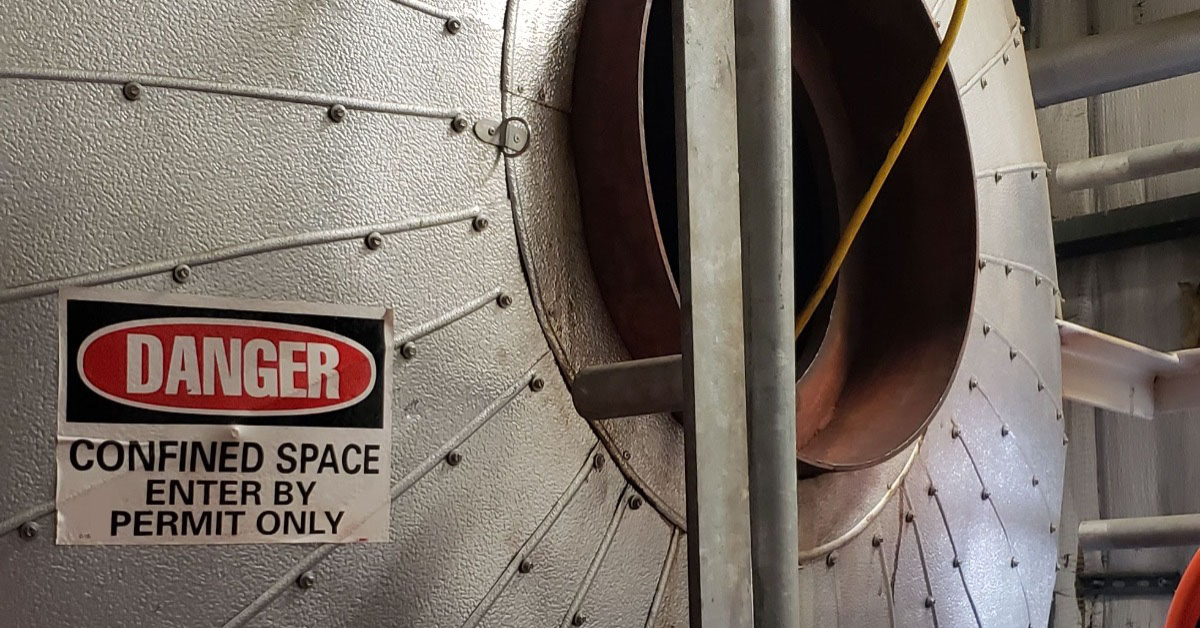Creating a Confined Space Rescue Plan

When you hear "confined space," does it leave you with more questions than answers? First Choice Safety Solutions is here to clear up all of your questions, from "What is a Confined Space?" to "What are Common Types of Confined Space Teams?". In Part 1 of our three-part series of posts, we'll dive into what a confined space is, and how to make a confined space rescue plan. You can also check out Part 2, "What Is A Confined Rescue Team?" for even more information or move ahead to Part 3 "Common Types of Confined Space Rescue Teams".
What is a Confined Space?
Employers must identify confined spaces in their workplaces and evaluate these spaces to determine if they meet the specific criteria of a permit-required confined space (PRCS).
Suppose that a space has been determined to meet the specific criteria of a PRCS. What do you do?
In this case, the employer must develop and implement a written permit-required confined space program, which includes specific procedures for working in and rescuing workers from PRCSs.
We must remember that all permit-required confined spaces are confined spaces, but not all confined spaces are permit-required confined spaces. The critical difference is that a PRCS contains one or more hazards that could pose a serious risk to workers and requires specific procedures and precautions to be taken to protect workers and ensure their safety.
By OSHA's definition, a confined space means that a space:
- Is large enough and so configured that an employee can bodily enter and perform assigned work.
- Has limited or restricted means for entry or exit (for example, tanks, vessels, silos, storage bins, hoppers, vaults, and pits are spaces that may have limited means of entry.
- Is not designed for continuous employee occupancy.
A permit-required confined space (PRCS) is a confined space that contains one or more of the following hazards:
- Contains or has a potential to contain a hazardous atmosphere.
- Contains a material that has the potential for engulfing an entrant.
- Has an internal configuration such that an entrant could be trapped or asphyxiated by inwardly converging walls or by a floor which slopes downward and tapers to a smaller cross-section.
- Contains any other recognized serious safety or health hazards*.
*Confined spaces can pose various types of hazards to workers. The two main types of hazards in confined spaces are inherent hazards and introduced hazards.
The key differences between these two types of hazards are as follows:
- Inherent hazards are those that are present in a confined space naturally, such as the configuration of a space, the lack of oxygen, or the presence of toxic gases.
- Introduced hazards are those that are brought into the confined space by workers or equipment, such as fumes generated from welding, chemicals, or creating a hazard such as an opening that would now require fall protection.
Inherent hazards refer to those that arise from the nature and characteristics of the confined space itself. These hazards are often more challenging to control because they are inherent to the space itself. Some examples of inherent hazards include the presence of toxic gases or lack of oxygen, which can cause asphyxiation or respiratory problems. Other inherent hazards may include physical hazards such as low lighting or uneven surfaces. These hazards are typically more predictable and can be managed by using engineering controls.
Introduced hazards result from the activities carried out within the space. These hazards can be controlled by implementing appropriate work practices and safety measures, such as proper ventilation, personal protective equipment, and hazard communication. Some examples of introduced hazards include fumes generated from welding, hazardous chemicals, or machinery that can cause physical injuries. Introduced hazards can be unpredictable and may vary depending on the specific work being done within the space.
Workers and employers need to be aware of both inherent and introduced hazards when working in confined spaces to effectively identify and control potential hazards and ensure workers' safety. By understanding the differences between these types of hazards, workers can take appropriate precautions to prevent accidents and injuries in confined spaces.
Now that we understand what constitutes a confined space and permit-required confined spaces, as well as hazard classifications, let's look at what confined space rescue teams are, what OSHA requires, and how to create a plan for future entries.
Assess the Hazard and Create a Confined Space Rescue Plan
When creating a confined space rescue plan, reference other resources besides OSHA, such as ANSI/ASSE Z117.1-2016 or NFPA 350. OSHA's Confined Space Standard, 29 CFR 1910.146, only sets the minimum requirements (law) for employers working in confined spaces and offers little guidance on complying with it.
A law is a rule regulating an action that the imposition of penalties can enforce. Like most laws, little to no advice is given on how to comply with them instead of just saying that you must comply. This is why the industry consensus standards from ANSI and NFPA are so valuable.
Why ANSI and Why NFPA
NFPA 350 is the standard developed by the National Fire Protection Association for its "Guide for Safe Confined Space Entry and Work." This standard covers all aspects of confined space work, including hazard identification and evaluation, pre-entry procedures, entry permits, ventilation requirements, personal protective equipment, and rescue planning and procedures. For lack of further explanation of the NFPA standard, it helps guide us on complying with the law.
ANSI/ASSE Z117.1-2016 "Safety Requirements for Confined Spaces" is the American National Standard for confined space entry and provides comprehensive information for the identification, evaluation, and control of hazards associated with confined spaces, as well as for the development of confined space entry programs and rescue procedures as well as other topics, including entry permits, atmospheric testing, ventilation, personal protective equipment, communication, and rescue planning and operations. Again, for lack of further explanation of the ANSI/ASSE standard, they help guide us on how to comply with the law.
Here are some steps to follow when developing a confined space rescue plan:
- Determine which spaces on your worksite are considered confined spaces and permit-required confined spaces, and assess the hazards present in each one. This includes identifying potential hazards such as atmospheric, physical, and other risks specific to the space.
- Determine the rescue team requirements. Evaluate the potential hazards and determine if an onsite rescue team is required or if external rescue services can be used. If an onsite rescue team is needed, determine the number of team members and the necessary equipment and training.
- Develop rescue procedures for each confined space, including identifying entry and exit points, communication protocols, rescue equipment and PPE requirements, and rescue team roles and responsibilities.
- Develop an alarm and response system. Establish a system for alerting emergency responders and personnel in the event of an emergency. This includes developing a communication plan and a way to alert the rescue team in the event of an emergency.
- Train and prepare the rescue team. Ensure that all team members receive training on the rescue procedures and equipment and participate in regular rescue drills and practice scenarios.
- Maintain and review the rescue plan. Review and update it regularly to ensure it remains current and effective and complies with relevant regulations or standards.
- Determine your confined space rescue team size. Your confined space rescue team should not be one-size-fits-all. It's essential to plan your rescue team around the space's hazards and the duties required on site.
Ready to learn more?
This post is Part 1 in a three-part series. Check out all three topics:
Part 1: "Creating A Confined Space Rescue Plan"
Part 2: "What Is A Confined Rescue Team?"
Part 3: "Common Types of Confined Space Rescue Teams"








